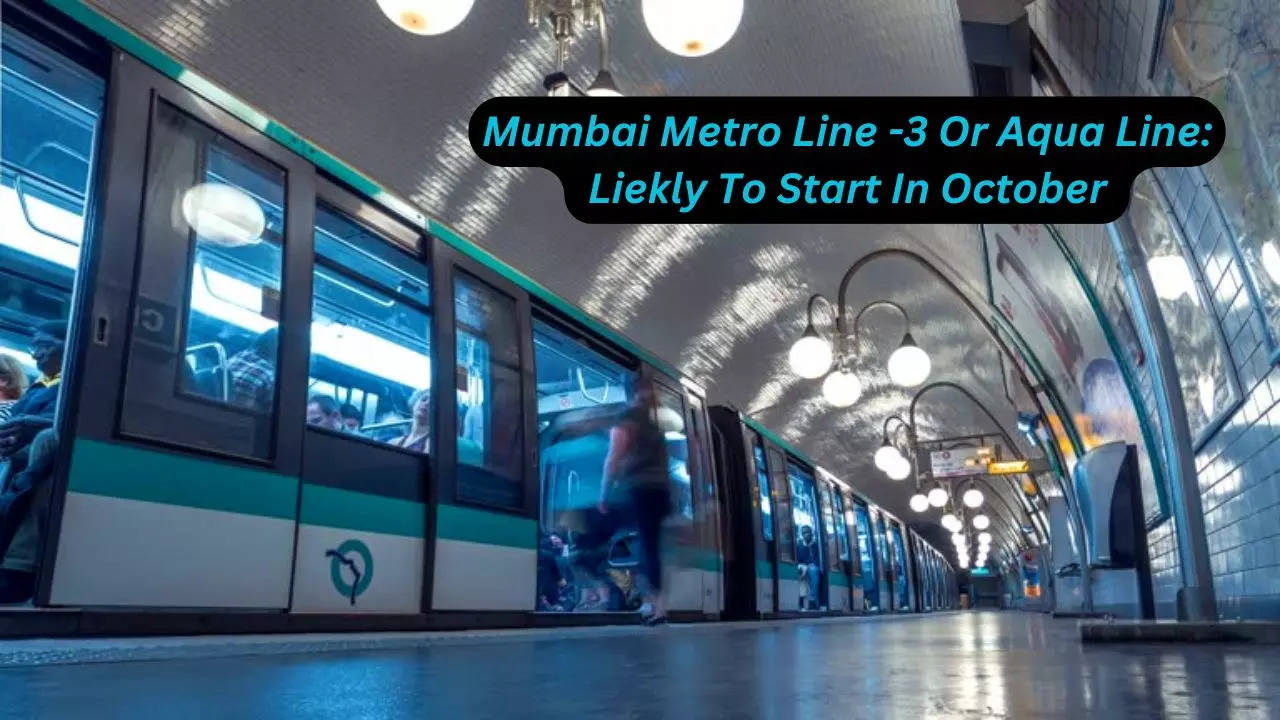
Mumbai: The first look of Mumbai Metro’s Aqua Line was revealed on Tuesday, and it is expected to be operational from the first week of October. The Metro Line-3 or Aqua Line (Colaba-Bandra-Seepz Corridor) is the first and only fully underground metro line in the city, with 27 stations, 26 of which are underground.
The estimated project cost for Metro Line-3 is Rs 37,725 crore. The project aims to serve 17 lakh passengers daily and is expected to reduce more than 5.5 lakh vehicles from the city roads. Key features of the Mumbai Metro Line-3 include platform screen doors, direct passenger-pilot communication, and communication-based train control (CBTC), which enables the possibility of driverless operation.
The train consists of 8 coaches to accommodate increased ridership. These metro train coaches can carry approximately 2,400 passengers in both sitting and standing positions.
Boost To Mumbai's Infrastructure
Mumbai Metro Line 3 is a critical infrastructure boost that promises to cut down travel times and reduce traffic congestion. The line will connect six major business districts, including Nariman Point, Lower Parel, and SEEPZ, among others. It will also provide access to over 30 educational institutions, hospitals, and recreational centers.
R. Ramanna, Director of Planning for Mumbai Metro Line 3, highlighted the project’s significance, stating, “This metro line will drastically reduce travel time, especially between the domestic and international airports. It’s a major step towards better connectivity for Mumbaikars.”
Cutting-Edge Features and Safety Measures
The metro system is equipped with several state-of-the-art features:
– Driverless Technology: Though drivers will initially operate the trains, the system is designed to transition to driverless operations.
– Platform Screen Doors: All underground stations will have full-height platform screen doors, enhancing safety.
– Passenger Comfort: Air-conditioned coaches with seating for 2,400 passengers, regenerative braking for energy savings, and CCTV surveillance in each coach for added security.
– Low Vibration Tracks: A first in India, the “Twin Booted Low Vibration Track – High Attenuation” system will mitigate noise and vibrations affecting buildings above ground.
Ashwini Bhide, Managing Director of MMRC, emphasized the project’s focus on safety and efficiency during a recent press conference. “The system is designed to provide a safe, comfortable, and seamless experience for commuters. We expect to significantly reduce vehicular trips and fuel consumption once fully operational,” she said.
(With inputs from Abhishek Awasthi)

